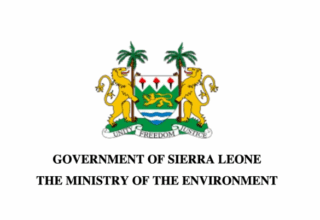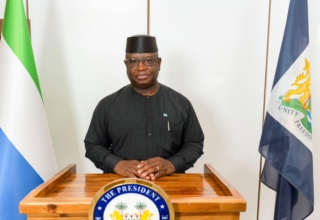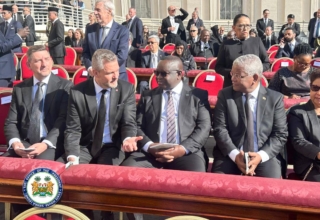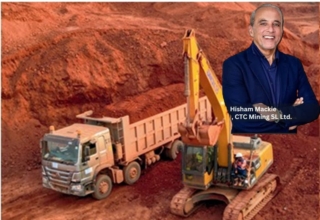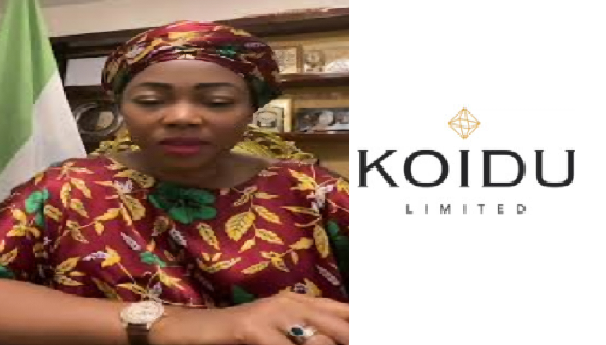
𝐁𝐲 𝐋𝐚𝐧𝐬𝐚𝐧𝐚 𝐆𝐛𝐞𝐫𝐢𝐞
Sierra Leone’s main diamond mining company is once again in the news, for heartless exploitation of locals. It should not be allowed to get away with it, as it did in 2008.
In early 2010, my friend Mr. Abu Brima, the ever-resourceful Executive Director of the Network Movement for Justice and Development (NMJD), persuaded me during a visit to spend a few days in Kono looking at the operations of Koidu Limited (then known as Koidu Holdings Limited). The company’s colourful history had been of interest to both of us during an earlier work we had done on ‘conflict diamonds’, so I agreed.
Koidu Limited began in Sierra Leone as DiamondWorks, which grew out of the Carson Gold Corporation, at the height of the civil war; several permutations later, it emerged as Branch Energy Ltd., which found itself enmeshed in a deal with the then military regime, National Provisional Ruling Council (NPRC), leading it to hire the Executive Outcomes mercenaries to fight the Revolutionary United Front in exchange for reserves of diamonds. In 1998, it was again involved in another deal with the temporarily ousted government of Ahmad Tejan Kabbah, again to import mercenaries, this time to unseat the Armed Forces Ruling Council junta. With the return of peace in 2002, new transformations in the company’s ownership and management led to the emergence of Koidu Holdings, headquartered in South Africa; its acquisition of the rich kimberlite deposits in Kono and Tongo was quickly formalised.
Full operations began in 2003, immediately involving the displacement of hundreds of residents who had only recently returned to their ravaged homes and had started rebuilding. An environmental assessment the company had done, as required by law, led to an ‘action plan’ that committed it to building 283 houses for the displaced residents (estimated to be 4,535 people); by end of 2007 it had built only 68 wretched mud houses. By this time, Benny Steimeitz, through his company BSG Resources, had taken over the company. This was long before he became a convicted criminal, but he was already a controversial operative, dogged by several fraud investigations. The company is now known as Koidu Limited, part of OCTÉA Limited.
Repeated protests by the Affected Property Owners Association were ignored after it began operations; and in December 2007, the protests turned violent when Koidu Holdings’ security forces opened fire on the property owners, killing two, and seriously wounding 10 others. A government commission which investigated the killings – the Jenkins Johnston’s Commission – produced a damning report, but a Bai Koroma Government White Paper tactfully avoided holding the company to account for the causing the riot; instead, it blamed the trigger-happy security forces. The White Paper called on KHL to arrange proper ‘compensation’ for the victims or relatives of victims. Emboldened, KHL committed only to making what it called a ‘donation’; and even so, it dilated and never seriously pursued this option, as I found out in March 2010 when I spoke to survivors, relatives of victims, local authorities and company officials.
It was not for want of money. The company’s own record showed that between 2004 and 2007, it made $86 million out of $33 million invested, paying $9.53 million in taxes to government. For much of 2008, KHL did not operate its mines. In 2009, however, the company reported total finds of 112,284.48 carats, with an average (reduced) value per carat of $173.52, amounting in all to $19,483,364.28. Out of this, it paid $1,071,585.04 in all taxes, taking for itself $18,411,779.24. It claimed this wasn’t profit; it was consistently reporting loss. In 2009, it reported in total 112,284.48 carats, with an average (reduced) value per carat of $173.52, amounting in all to $19,483,364.28. Out of this, it paid $1,071,585.04 in all in taxes, taking for itself $18,411,779.24. (These figures would rise exponentially over subsequent years: the company has now made hundreds of millions of dollars in profits). It certainly should have made a more robust effort to build the houses for the displaced property owners, which it estimated would cost $5 million.
This impression was only heightened by information I received that the company was consistently undervaluing its diamonds for tax purposes. I wrote at the time: “It is important to note that KHL exports its own diamonds, after valuation by the Government Diamond Department, which also certifies the diamonds with the Kimberley Process stamp of approval. KHL’s diamonds have consistently shown a lower value per carat than the Sierra Leonean average, suggesting that those diamonds may be undervalued for tax purposes. The average value of Sierra Leone’s diamond is $250 per carat, with many stones from the Kono area selling in excess of $400 per carat. The government should urgently look into this matter.” This was published in 2010. I received lots of insults from government functionaries for the report at the time: I was accused of being an ‘enemy of progress’ for criticising a company that was paying huge taxes to the government and had created hundreds of jobs. In 2016, the Panama Papers revealed that through dodgy dealings, the Steinmetz Group of companies operating our main diamond mines consistently undervalued Sierra Leone’s diamonds when declaring them to authorities before export, robbing the country likely of tens of millions of dollars over the years.
All this came to mind after I recently read a Reuters report stating that workers employed by the company had been receiving “only…30% of the value of their salaries because they were pegged to the US dollar but paid in the local currency, and the company was using an exchange rate from 2016.” The workers also said that they were not provided “access to adequate toilet facilities and drinking water.” These claims were eloquently elaborated in a passionate video message from the First Lady, a fervent advocate of many worthy issues, including the plight of people in her home district of Kono, on Thursday.
The contract for workers, many of which were signed in 2016, had committed the company to setting their salaries in dollars, to be paid in leones “at the prevailing exchange rate.” The language is clear enough; and since the value of the leones has been consistently dropping since that time, the amount of leones paid to the workers should have risen as consistently. Instead, the company fraudulently insisted that the amount of money in leones was to remain as in 2016. This is unconscionable: it is certainly criminal. And it is a matter that should long have triggered government intervention. It calls for full compensation and payment of the withheld amount of all those years to the workers.
By announcing a stupid legal action against the First Lady and playing around with the idea of closing the mines, Koidu Limited, whose frantic exploitation of the rich Kono reserves may have by now plateaued, wants to shirk its legal responsibility. It is a criminal copout. It should not get away with it.

